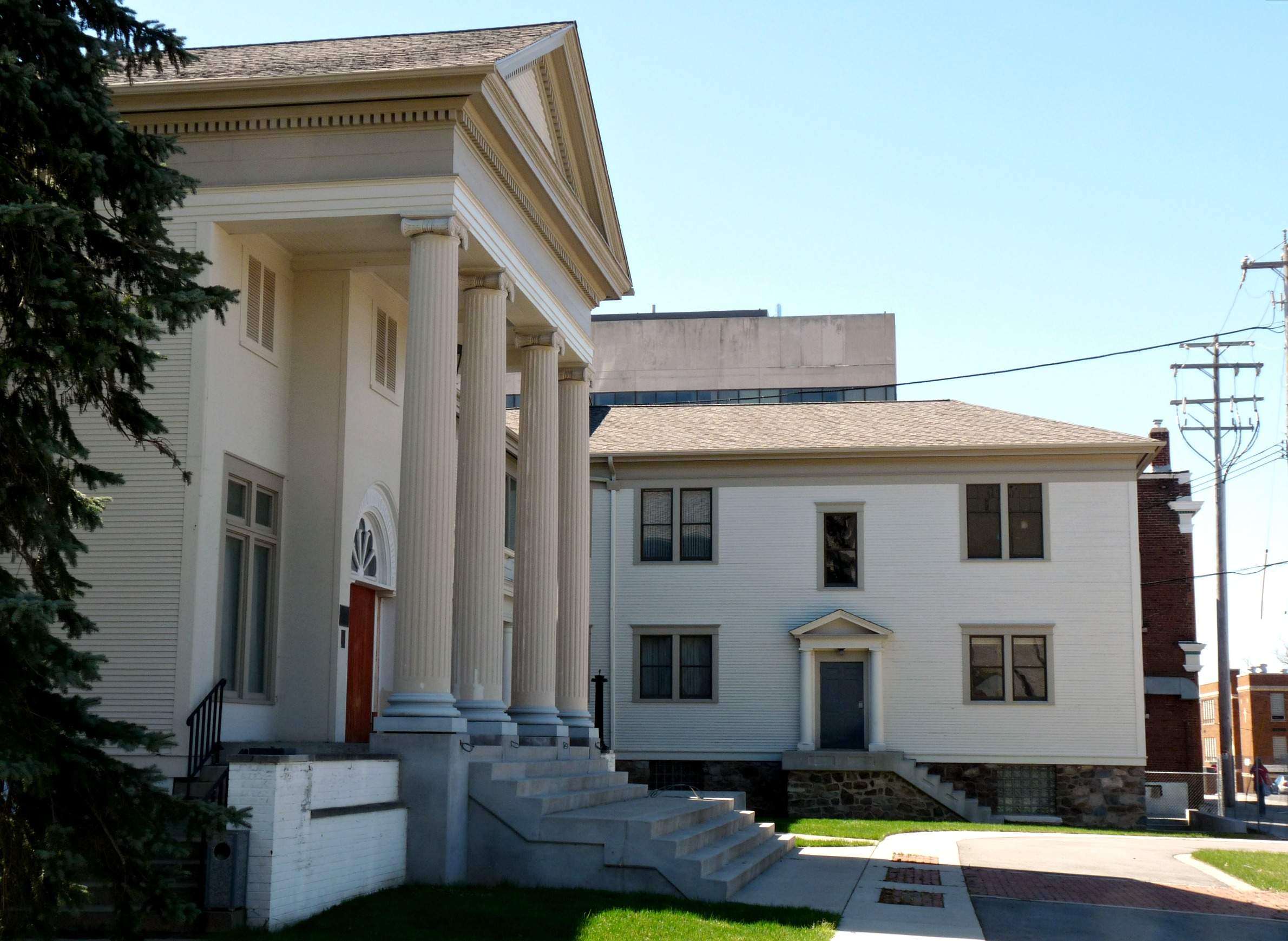
An effort is underway to transform the Wausau Club building into a contemporary art museum.

An effort is underway to transform the Wausau Club building into a contemporary art museum.
As many smaller Wisconsin communities face declining population and changing economic realities, people across the state are seeking opportunities for renewal. Few efforts symbolize desires to both celebrate the past and build the future like finding new uses for historic buildings. For example, in 2012, an entrepreneurship group in Vilas County opened a business incubator in a former cranberry plant. And in 2015, the proprietors of Spring Valley Aquaculture purchased an old schoolhouse near Manitowoc to house an indoor shrimp farm.
This kind of reinvention is playing a growing role in economic development in central Wisconsin. Three people who have experience rehabbing historic buildings visited Wisconsin Public Radio's Route 51 program on March 15, 2017 to discuss how these edifices serve as homes for new businesses and artistic endeavors. Their work combines practical grit and high-minded ambitions for culture and community.
Jared Linzmeier operates Ruby Coffee Roasters from a former concrete company building in Nelsonville, a small town in Portage County. Ruby ships its small-batch specialty coffees to shops and cafes across the country. Linzmeier, who grew up in nearby Amherst, talked about how the area's architecture, culture, and abundance of distinctive small towns drew him back to Wisconsin from Seattle.
"I wanted to start a business that really focused on quality," he said.
Linzmeier noted that when older people who recall both economic prosperity and tough times in the region stop by Ruby's tasting room, they're surprised to see a business operating in a historic space.
"They just seem so excited that it hasn't been just erased," he said.
David Hummer runs The Bauhaus art studio in Wausau. He is leading a local effort to open a contemporary art museum in the historic Wausau Club building, said projects like his build on the crucial links between art and architecture. Bauhaus is named after a German art movement that focused on how the two disciplines intersect.
"I'm a rare hybrid of painter, businessman, developer," Hummer said.
He'll need to be all three to make the project succeed: The building has been vacant since 2004 and needs structural renovations and new gallery lighting. But Hummer is hopeful, and is pitching the project to the city of Wausau by citing its potential economic impact.
"Most people don't realize that paintings are constructed — they're built, just like a good building," he said, noting that the word "bauhaus" translates from German as "house of construction."
A little to the north in Merrill, Stephanie Springborn and her Winds Paradox project are also taking a nuts-and-bolts view, as she works to convert a historic building into an art gallery. The structure, which Springborn has dubbed the Matthias Building, has in the past served as an armory and a vocational school.She had to talk Merrill's city council out of demolishing it.
Over the course of her work, Springborn documented the renovation of this building in very rough shape. Her images underscore the fact that there's no road map for people who take on such projects.
"There's so much along that journey that goes unspoken... in my case, the parapet that buckled when we were removing the old roof," she said.
Springborn said people renovating historic buildings have a duty to make sure "it isn't just a dream that's off in la la land, that it's actually a viable and economic entity, creating something new."
In addition to literally getting her hands dirty and tackling the building's rotted-out roof, she prepared for the venture by talking with other local businesses and counting cars to make sure the location would attract adequate traffic.
"It becomes a challenge almost of urban planning and how do you make a corridor through a city, how do you make attractions, how do you draw people to Merrill?" she said.
The Wausau Club building began life as a men-only business club in 1901 or 02. Hummer believes the original tenants would approve of his venture, but also points out the irony of opening an inclusive venture in the space.
"It will be a place where the community decides the fate of the future of this city," he said. "It's going to be opened up for that kind of discussion and dialogue."
It's safe to say that the people who originally built these structures didn't have art or small-batch coffee in mind, but perhaps that only enriches the connection between history and the future.